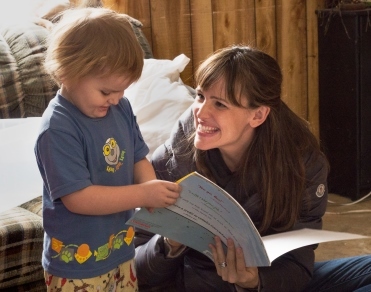When I first met my daughter, she was 2 and a half months old. She looked perfect in her little crib in a crowded Vietnamese orphanage, but adoption is a process, and seven more months passed before I could take her home.
In the meantime, the staff was caring, but with so many little ones to diaper and feed, they didn't have much time to play with Molly. Instead, they tied a string of beads across her crib. I imagine she passed many hours fiddling with them.
Thanks to that improvised toy, Molly's fine motor skills were pretty good when I could finally bring her home. What she couldn't do was balance her own head and torso if I sat her up. She simply hadn't had the practice. And so even with the extra attention my husband and I were able to give her -- and hours of on-the-floor tutorials from my older sons -- sitting, crawling and walking all came later than they might have.
I read Molly books every day, wanting to expose her to her new language of English. Of course, as research has since made very clear, an ongoing stream of communication with our babies is key to their development, even if they've been around the same language from day one.
I feel so lucky that I was able to give Molly the early support she built upon to become the bright, curious and outgoing seventh-grader she is today.
But I know millions of moms right here in America are having a much tougher time than I did, and they're not always able to give their kids the books, attention and high-quality early learning experiences that give babies and toddlers a leg up.
As a result, the 15 million U.S. children growing up in poverty are typically more than 18 months behind their better-off peers by the time they enter school. Many never catch up.
So I'm very thankful that tonight at 10 p.m. the new PBS documentary series A Path Appears is showing that these children are not a lost cause.
In the film's "Breaking the Cycle of Poverty" episode, Save the Children Artist Ambassador Jennifer Garner takes New York Times columnist Nicholas Kristof to rural West Virginia to see how an innovative home-visiting program is turning the status quo on its head.
They meet Save the Children's local home visitor, Tonya Bonecutter, who brings books, developmental activities and other critical support into the homes of struggling local families. Whenever possible, Tonya starts visiting moms during pregnancy. She also helps moms and other caretakers forge early connections with the school their child will eventually attend.
The result are phenomenal.
Keep in mind that the children we serve not only live in poverty, they face an average of four additional multiple risk factors -- such as teen parents, parents who didn't finish school and substance abuse. Yet 80 percent of children in our programs score at or above the national average on pre-literacy tests at age 3 and again at age 5. These kids enter school not only ready to learn but ready to excel.
Can you imagine living in a country where every child got the strong start they need to reach their full potential?
As Kristof says in the film, "It's so much easier to prevent problems on the front end, then to spend money to try and fix things on the back end."
Check out Jennifer Garner and Kristof in a bonus video here.

